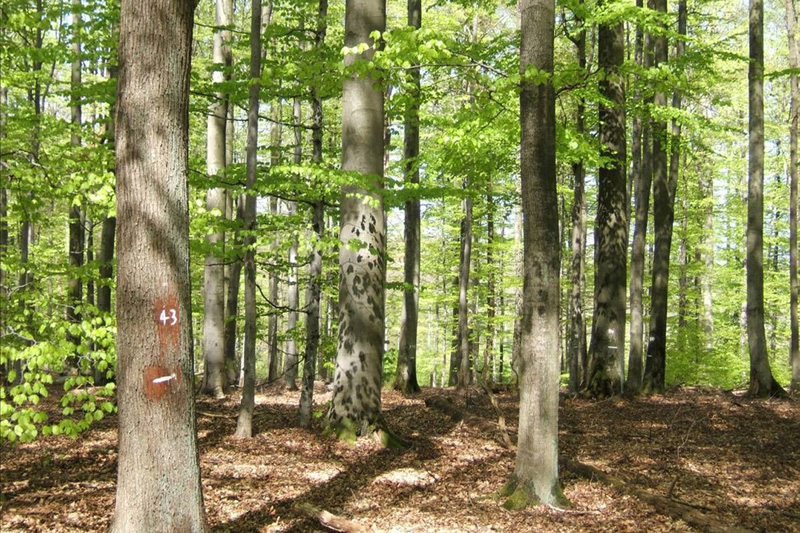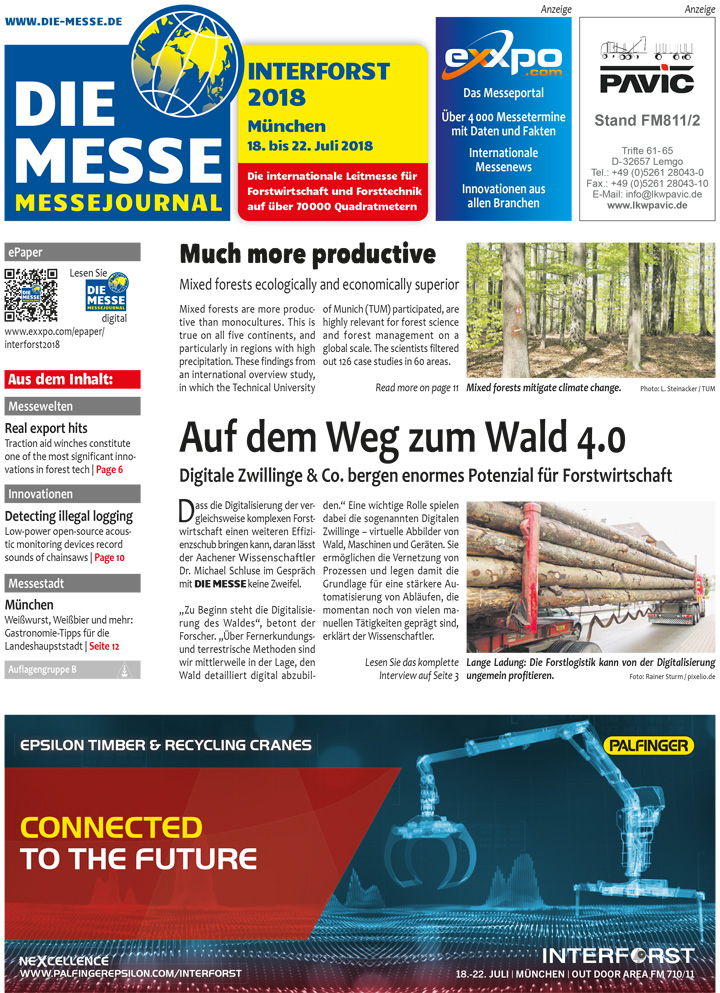18 July 2018
“We know of the many advantages of mixed forests,” states Professor Hans Pretzsch, co-author of the study and author of a recently released, internationally acclaimed book on the ecology and management of mixed-species stands. “Mixed-species forests are ecologically more valuable as versatile habitats. They mitigate climate change, as they mean a higher carbon sink.”
Trees in mixed-species forests are often better supplied with light, water, and soil nutrients via their complementary crown and root systems. “This makes mixed stands more resilient during dry years. In addition, they are more stable against pests and visually more appealing,” adds Prof. Pretzsch.
But these arguments alone have not yet managed to convince forestry management to promote mixed-species stands. This meta-analysis and overview study now shows that a prudent selection of the combination of tree species leads not only to more ecological and resilient forests, but also to greater productivity, explains Pretzsch. The study documents that mixed stands perform better in terms of productivity than monocultures, particularly in areas with favorable water supplies, such as in Central Europe. In cooperation with other forest scientists from France, Georgia, Switzerland, and Scotland, the TUM experts reviewed 600 studies which analyzed the influence of mixed forests on productivity. The yardstick used was the increase in volume of trunk wood which was calculated via repeated measurements of the tree diameter, height, and trunk shape.
From these studies, they filtered out 126 case studies in 60 areas on five continents which were published in 1997 and 2016. All these studies are based on long-term experiments for which regular measurements have been taken for decades, quite a few of which are in Bavaria.
“Based on these findings, the interactions between the individual tree species will be studied in more detail at the TUM,” states Pretzsch. The prerequisites for this are long-term experimental areas, which, in Bavaria however, have primarily encompassed monocultures in the past. The forestry experiments in Bavaria are the oldest in the world, and provide a unique empirical data basis. As early as the 1870’s, Permanent Secretary for Forestry August von Ganghofer (father of the author Ludwig Ganghofer) had experimental areas created with the conviction that only repeated analyses supply reliable information.
https://www.tum.de/
https://interforst.de/
Mixed forests ecologically and economically superior
Mixed forests are more productive than monocultures. This is true on all five continents, and particularly in regions with high precipitation. These findings from an international overview study, in which the Technical University of Munich (TUM) participated, are highly relevant for forest science and forest management on a global scale.
 Photo: L. Steinacker/TUM Photo: L. Steinacker/TUMThrough their complementary crown and root systems, trees in mixed forests are often better supplied with light, water and soil nutrients. |
Trees in mixed-species forests are often better supplied with light, water, and soil nutrients via their complementary crown and root systems. “This makes mixed stands more resilient during dry years. In addition, they are more stable against pests and visually more appealing,” adds Prof. Pretzsch.
But these arguments alone have not yet managed to convince forestry management to promote mixed-species stands. This meta-analysis and overview study now shows that a prudent selection of the combination of tree species leads not only to more ecological and resilient forests, but also to greater productivity, explains Pretzsch. The study documents that mixed stands perform better in terms of productivity than monocultures, particularly in areas with favorable water supplies, such as in Central Europe. In cooperation with other forest scientists from France, Georgia, Switzerland, and Scotland, the TUM experts reviewed 600 studies which analyzed the influence of mixed forests on productivity. The yardstick used was the increase in volume of trunk wood which was calculated via repeated measurements of the tree diameter, height, and trunk shape.
From these studies, they filtered out 126 case studies in 60 areas on five continents which were published in 1997 and 2016. All these studies are based on long-term experiments for which regular measurements have been taken for decades, quite a few of which are in Bavaria.
“Based on these findings, the interactions between the individual tree species will be studied in more detail at the TUM,” states Pretzsch. The prerequisites for this are long-term experimental areas, which, in Bavaria however, have primarily encompassed monocultures in the past. The forestry experiments in Bavaria are the oldest in the world, and provide a unique empirical data basis. As early as the 1870’s, Permanent Secretary for Forestry August von Ganghofer (father of the author Ludwig Ganghofer) had experimental areas created with the conviction that only repeated analyses supply reliable information.
https://www.tum.de/
https://interforst.de/
| FAIR NAVIGATOR | |||||||||
|---|---|---|---|---|---|---|---|---|---|
|
| E-PAPER INTERFORST |
 |
